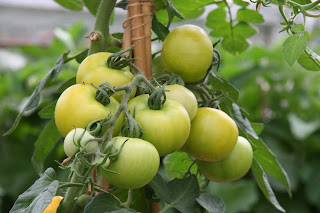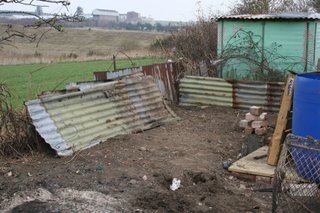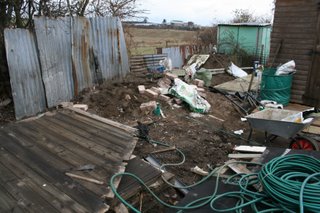The Emergence of a Wildlife Pond
Weeding on the plot took a new turn as I identified some plants that I thought would thrive around the pond edges. These were carefully lifted and transplanted where most of them now survive. I am hoping that they will seed themselves for next year. The allotment committee members cut down and dug out the roots of a large elder tree which had not survived the winter. I begged the waste, including the root. The smaller clippings were bundled up and laid in a difficult to access shady corner I had created. The large root was positioned in front of these with one of the longer roots curving over to create a perch for any bird brave enough to want a drink of water.
Because of the harsh winter and unusual weather this year I found lots of native plant suppliers were waiting for stock to move into growth but eventually I got my supply of emergent and submersible plants. The only floater I could get at the time was ivy leafed duckweed, not to be confused with the nuisance duckweed floating on many pond surfaces. Ramshorn and the great pond snails were a gift from my friend’s wildlife pond and they do seem to be re-producing.
Frogspawn was introduced as a result of a silly frog laying its eggs in a shallow tray of water in my home garde, (a result of thawed snow and ice) which was carefully transported to my new pond long before I would have liked to have done so. Because of the lack of much life in the water I did buy daphnia and bloodworms for the emerging tadpoles to feed on.
The water went through several colour changes from pea soup green to a rusty looking brown- green colour and the emerged tadpoles seemed to congregate in their hundred to suck at the green algae now coating the liner. On more than one occasion they almost had me for company as I tiptoed along the narrow planting edges to install yet another eagerly gleaned ‘weed’ carefully excavated from my vegetable beds.
I am happy to report that these tadpoles have survived and many small froglets now stalk the surrounding area, sometimes taking up refuge in the tomato house adjacent to the pond. Also every few days, when the sun is shining there is a pink bloom of activity as the daphnia colony produces yet another few thousand young. The feeding frenzy of the remaining tadpoles makes fascinating watching.
It is now 3 months since the pond was first filled, and what a difference 3 months makes. It is now a thriving area simply buzzing with life. Countless bees are in constant attention to the flowers such as comfrey, feverfew, marigold, sweet-peas, poppies and the many creeping ground cover plants that have taken up residence.
From March 31st to June 30th 2011 My pond has gone from this
To this














































 Then I got tired of waiting for my neighbour to cut down the elderberry trees that were killing the hawthorn hedge, so I did it myself.
Then I got tired of waiting for my neighbour to cut down the elderberry trees that were killing the hawthorn hedge, so I did it myself.

